If your business is on the smaller side, it can be hard to find a no-frills CRM system that suits your company. Pipedrive is one of the CRM systems that aims to solve this issue.
Pipedrive aims to make it simpler for small and medium companies to manage their sales pipeline better, as well as encourage a greater amount of closed deals.
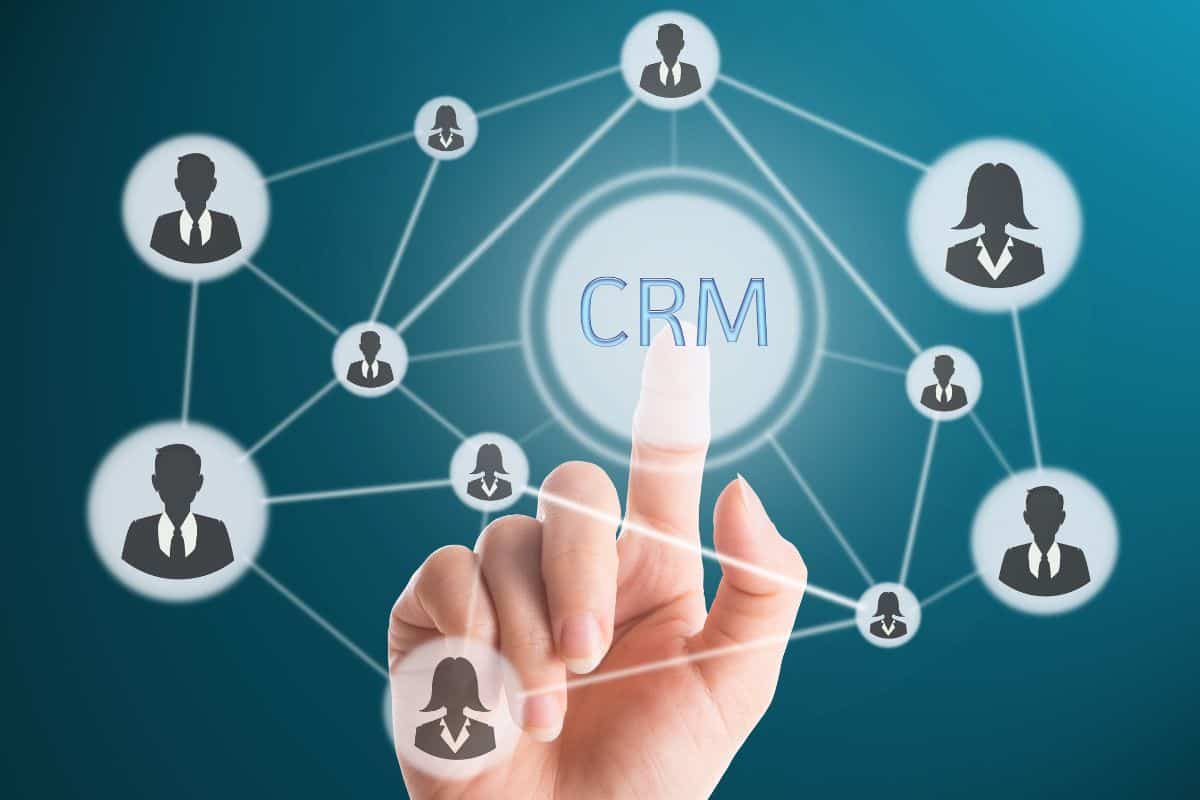
The interface is clean and easy to use, allowing users to begin adding data and overseeing deals right away.
It’s easy enough to start using Pipedrive, but like any new software, you need to get to grips with a few terms and topics before you can get the best out of it.
You’ll learn how to use the Pipedrive CRM for your company in this article. We’ll cover an overview of common terms you’ll need to know, as well as the range of actions you can take with the system.
If you’re ready to start using Pipedrive and help your business reach its full potential, keep reading!
Table of Contents
Overview Of Common Pipedrive CRM Terms
Pipedrive’s terminology is like other CRM systems, but it’s a good idea to know how these terms connect within the software.
Deal
Deals are the main item you’ll work with in Pipedrive CRM. They usually include data, such as the point of contact, estimated final sale value, predicted final close date, and the company.
Deals are contained inside a box within Pipedrive’s primary interface. You can choose to edit them when necessary, as well as drag and drop a deal into some deal phases.
Deals act as the main truth report for every potential Pipedrive sale.
Pipeline
The general sales pipeline is what you first notice when you log into the system, as it works as the Home page.
Depending on your company, you might have several Pipelines on the go. For instance, you could have different Pipelines for consulting services and the sale of manufactured items.
You can personalize and edit Pipelines or just use the default settings. There’s also a filter function that will narrow down the list of deals to your chosen criteria.
Contact
A Contact is a multipurpose term that includes both Organizations and People.
Pipedrive lets you look at a list of Contacts, which would include Organizations and People, but you won’t be able to add a specific Contact.
Do remember to differentiate a Contact from an Organization or Person, as these words might be used another way within different CRMs.
People
People are particular individuals with whom you can view certain information, including phone numbers, jobs, emails, contact records, and scheduled calls/meetings.
Every person needs to be connected to a company, the business they are employed at, and possibly a particular deal inside Pipedrive CRM.
Organization
Like People, you can view information about an Organization, including address, current deals, deal history, and individuals connected to an Organization.
If you want to make a deal, you need a Contact and an Organization linked with it to add it to a Pipeline.
Activity
Activities cover the actions that need to be taken after a particular deal. These could be in-person meetings, follow-up phone calls, demonstrations, and more.
You can view upcoming activities by clicking on the Activities label on the upper menu. You can plan Activities in many ways, such as inside a Deal, Organization, or Person.
Sales Pipeline Management

Pipeline’s primary selling advantage is that it’s very easy to comprehend the main interface. You can begin adding deals to a pipeline almost instantly.
How To Set Up A Deal
You can create a new deal by journeying to the Home pipeline page and clicking on the green button labeled Add Deal.
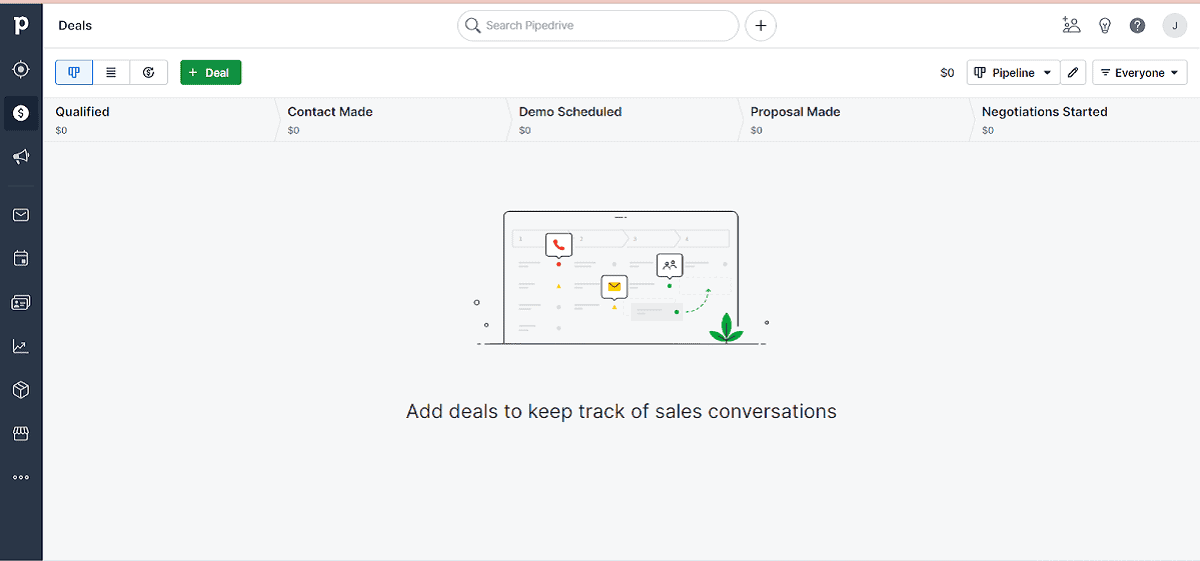
Once you’ve done this, a pop-up window will appear in which you’ll need to enter any necessary data.
This includes the name of the contact and organization, deal value and title, pipeline stage, and predicted closing date.
If the organization or person hasn’t been added to Pipedrive, the software will create them for you once you’ve added the deal.
Once you press Save, you’ll see the deal show up in your pipeline.
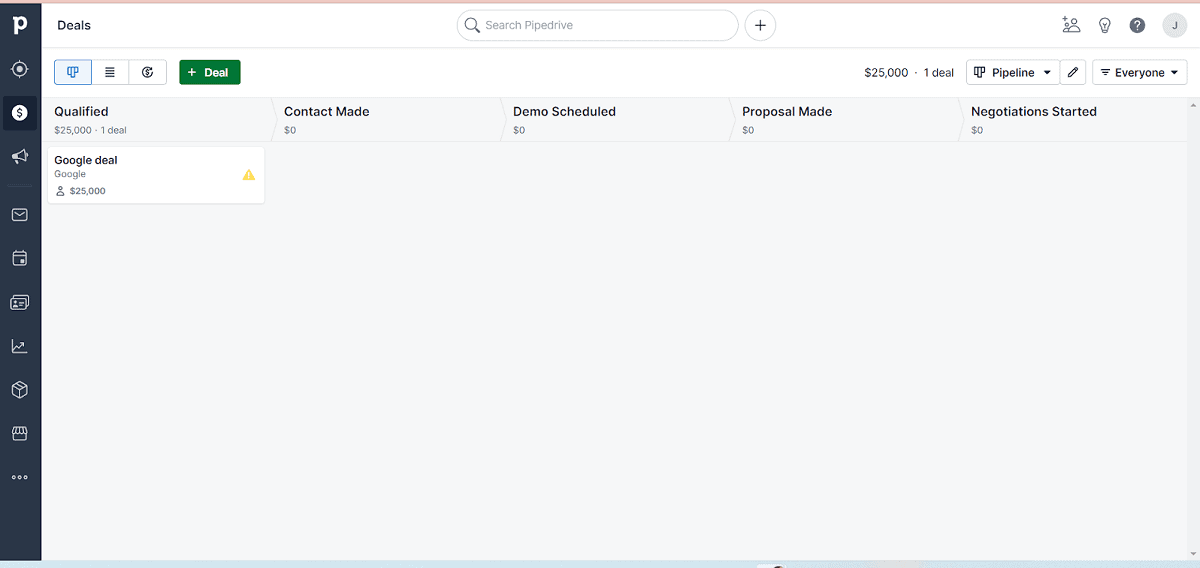
However, there won’t be any next-steps activities added to the deal. This will be visible as a yellow hazard image at the bottom right of the box. You can plan activities by clicking on the icon.
How To Set Up An Activity
Now you’ll see a screen where you can plan activities linked with the deal. These include meetings, phone calls, emails, tasks, and lunches.
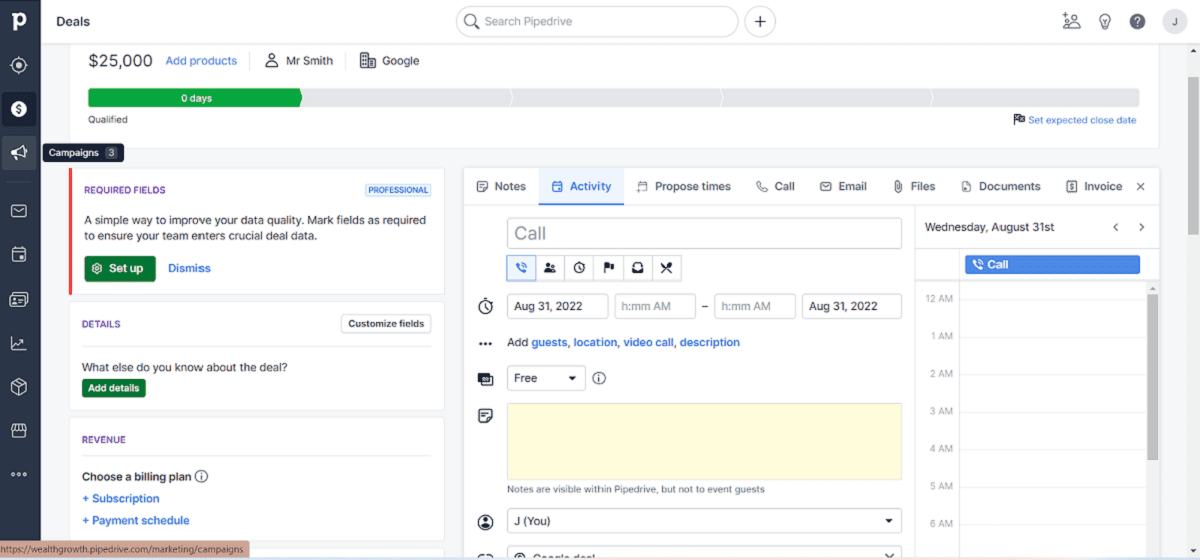
For these options, you can invite other individuals from Pipedrive, distribute the tasks to other people, and note down any information about future activities.
Handling An Activity
Now press on the Activities label in the upper menu.

You’ll notice that the new activity will be listed, including any more that you’ve planned for later on.
You can check off an activity as done after it’s been finished, as well as transfer the deal to a different pipeline stage if need be.
You can also drop the deal into a different pipeline. Depending on how the activity turned out, you can mark it as Lost or Won, or completely delete it from the system.
You can personalize the pipeline’s phases by pressing the pencil picture. This is located in the top right corner, by the Pipeline drop-down menu.

This will take you to the pipeline editor, in which you can change the probability, rename, add, and delete each stage.
Once you’ve got the hang of working with Pipeline’s screen, you’ll be able to begin working with deals, individuals linked with them, and businesses that could be potential clients.
Reports, Goals, And Forecasts
Pipedrive users can also look at how their team has been progressing through goals, reports, and forecasting.
Click on the Progress label in the upper menu to see a drop-down list, then click on the label Dashboard.
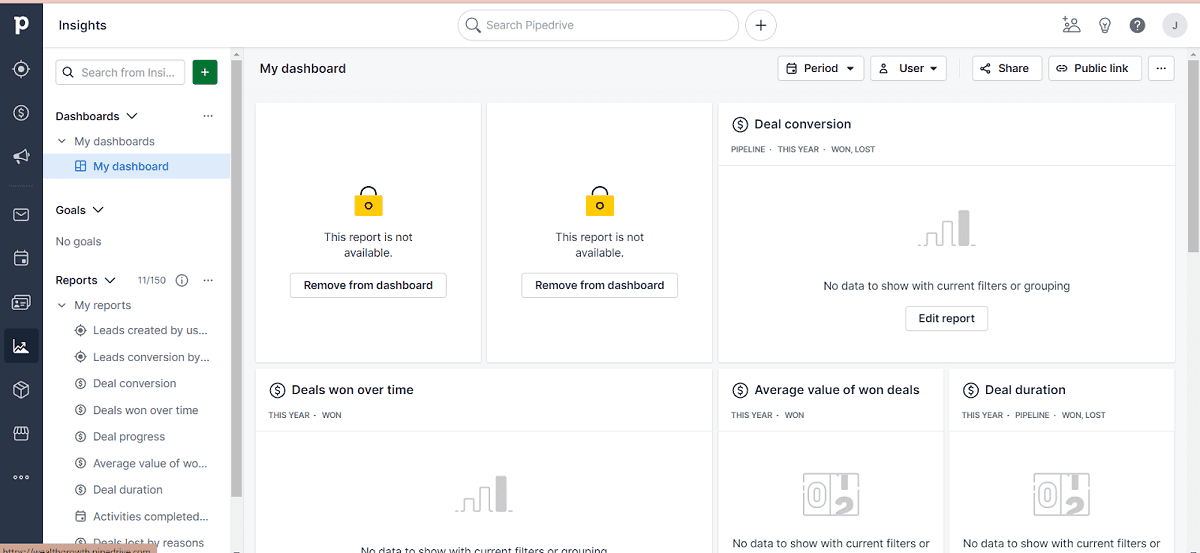
This will be a live summary of important sales performance data, like won or lost deals and finished activities.
The date range can also be controlled through the drop-down list in the top right corner. You can also filter to view particular employees within the team.
Bear in mind that Enterprise and Professional users are the ones who can produce more than one dashboard.
Reports
The label Reports on the Progress menu will display a reports screen. This will contain reports from three primary classes: pipeline performance, sales performance, and activities effort.
Goals
The Goals button in the Progress menu allows you to set, track, and change sales goals. You can do this from the team, organizational, and individual stages.
For instance, add a Company goal by selecting Company goals in the left-hand column, then select the Add Goal label in the top right.
Then you can decide which goal you want to monitor, as well as the time and whoever the goal applies to.

You can track all of your goals in the Goals display once you’ve set them up.
Forecasts
Go to the Deals screen, then press on the top left icon labeled Forecast when it’s hovered over.

This will transport you to a monthly forecast. You can see the overall dollar value of every deal predicted to close inside a particular month, as well as the value of deals, closed over the past months.
The Bottom Line For Pipedrive CRM
Remember that Pipedrive CRM was meant for small to medium-sized companies. The software isn’t going to be as complex as CRMs for large enterprises.
Nevertheless, Pipedrive is a simple, affordable tool that can help small businesses with organization, monitoring progress, and implementing follow-ups when necessary.
Its clean and easy-to-use interface makes it easy to complete assignments, which will help employees with the sales pipeline.

I’m a blogger and entrepreneur. I want to help you in your journey to build your business online.


